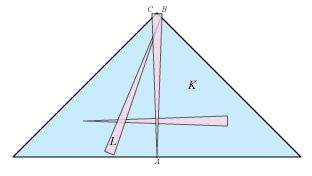Let $K$ and $L$ be two two-dimensional convex bodies, and consider their Cartesian product $K\times L\subseteq \mathbb R^4$. Now let $U_\theta\subseteq \mathbb R^4$ be the two-dimensional subspace spanned by $(1,0,\cos\theta,-\sin\theta)$ and $(0,1,\sin\theta,\cos\theta)$. Let $f(\theta) = \max_{\mathbf{x}\in\mathbb{R}^4} |(K\times L)\cap(U_\theta+\mathbf{x})|$, that is, the maximal cross-sectional area of $K\times L$ parallel to $U_\theta$. I have reason to believe, and would like to prove, that $f(\theta)$ cannot be unimodal. I call $f(\theta)$ unimodal if it is strictly increasing for $a\le\theta\le b$ and then strictly decreasing for $b\le\theta\le a+2\pi$. I will not say for now what my reasons are to believe that $f(\theta)$ cannot be unimodal, because I don't want to bias the reader's impression of what the best approach to this problem might be.
If anyone has any suggestions for approaches which might be beneficial to consider I would be very happy. Also, if you have some ideas for solving special cases, such as the case $K=L$, that would also be helpful. In the case $K=L$, we have $f(\theta)=f(-\theta)$, $f(0)$ is automatically a maxmimum, and $f(\pi)$ is either a local maximum or a local minimum. So, unimodality occurs if and only if $f(\pi)$ is a minimum and there are no other local extrema.

